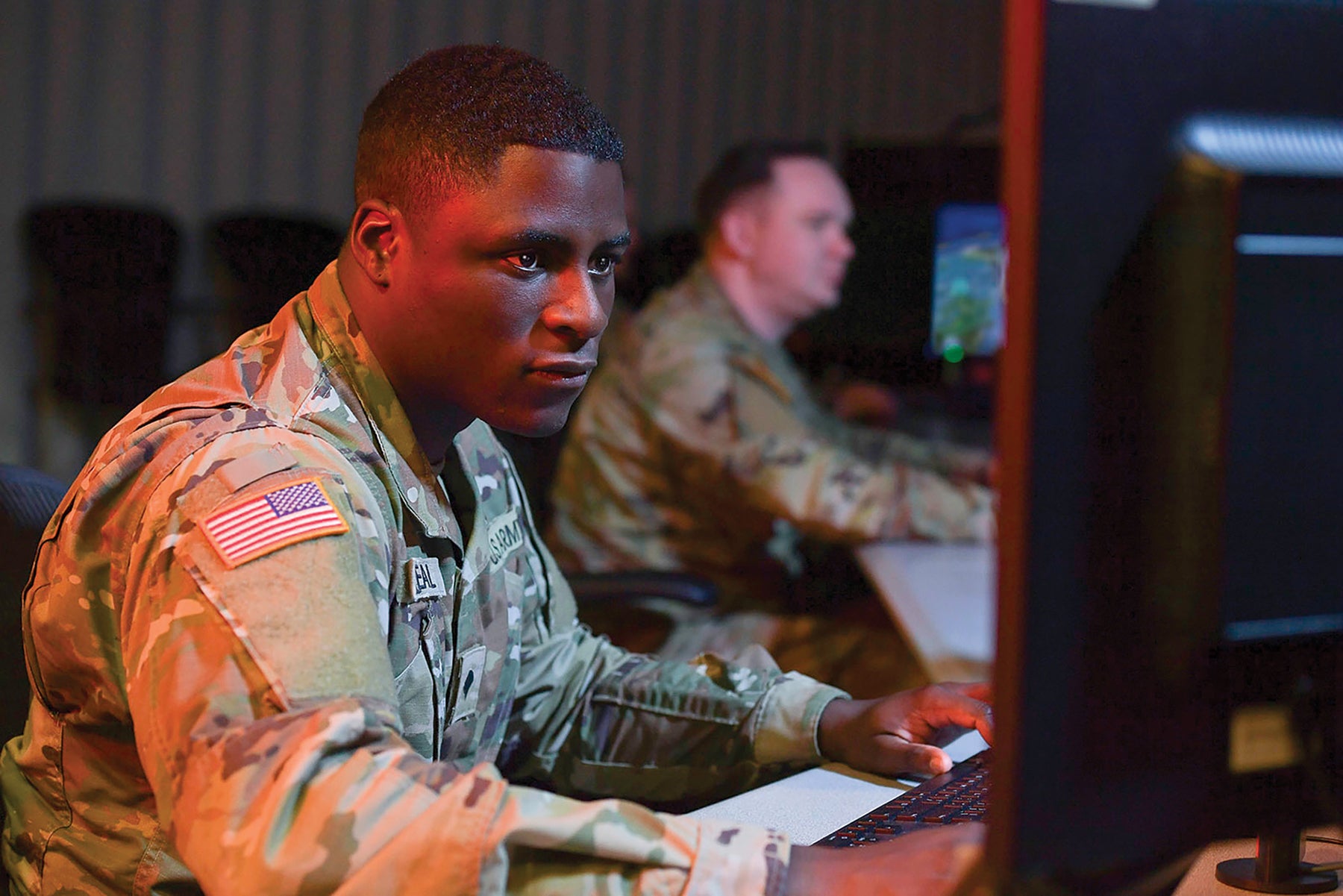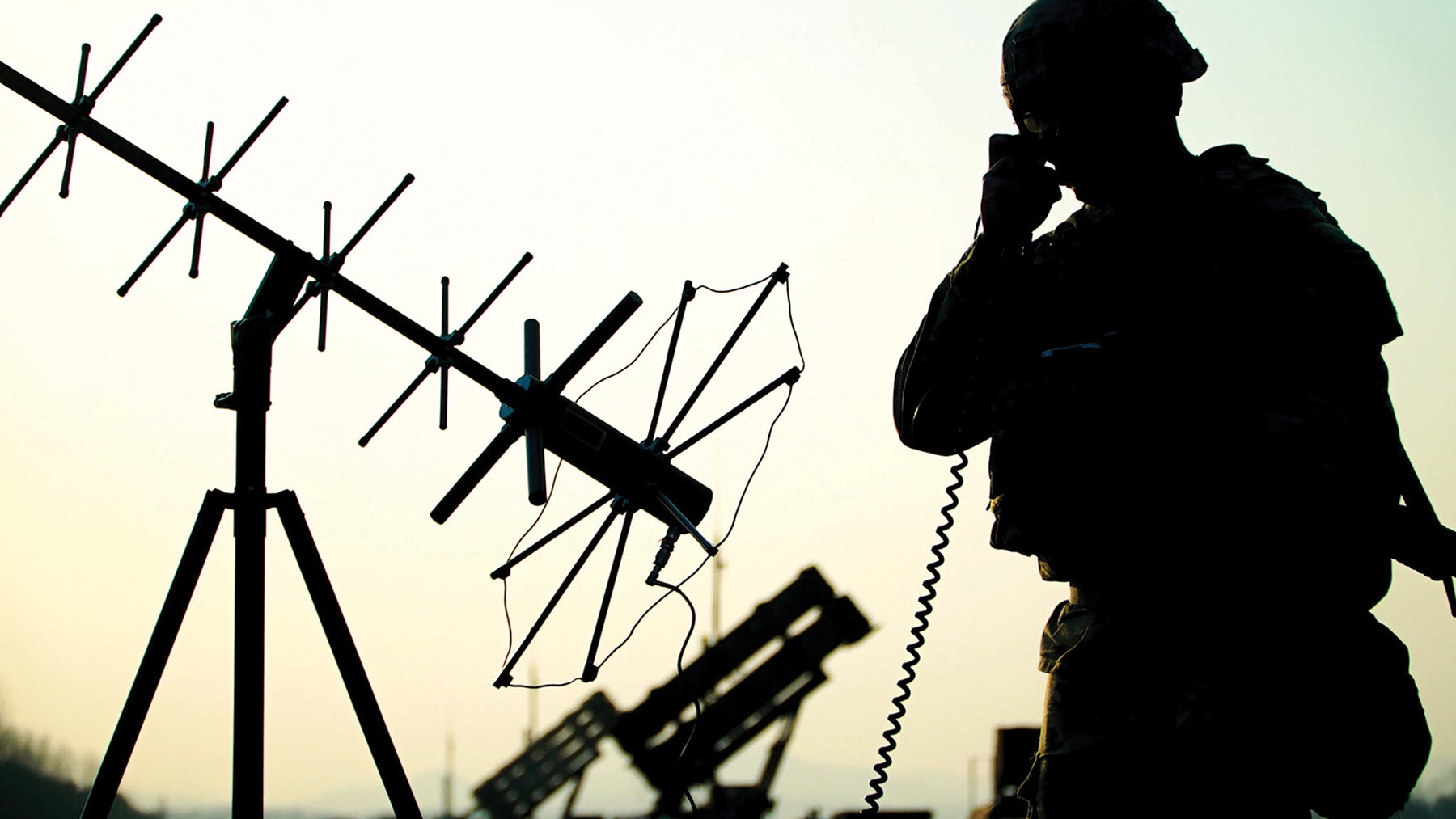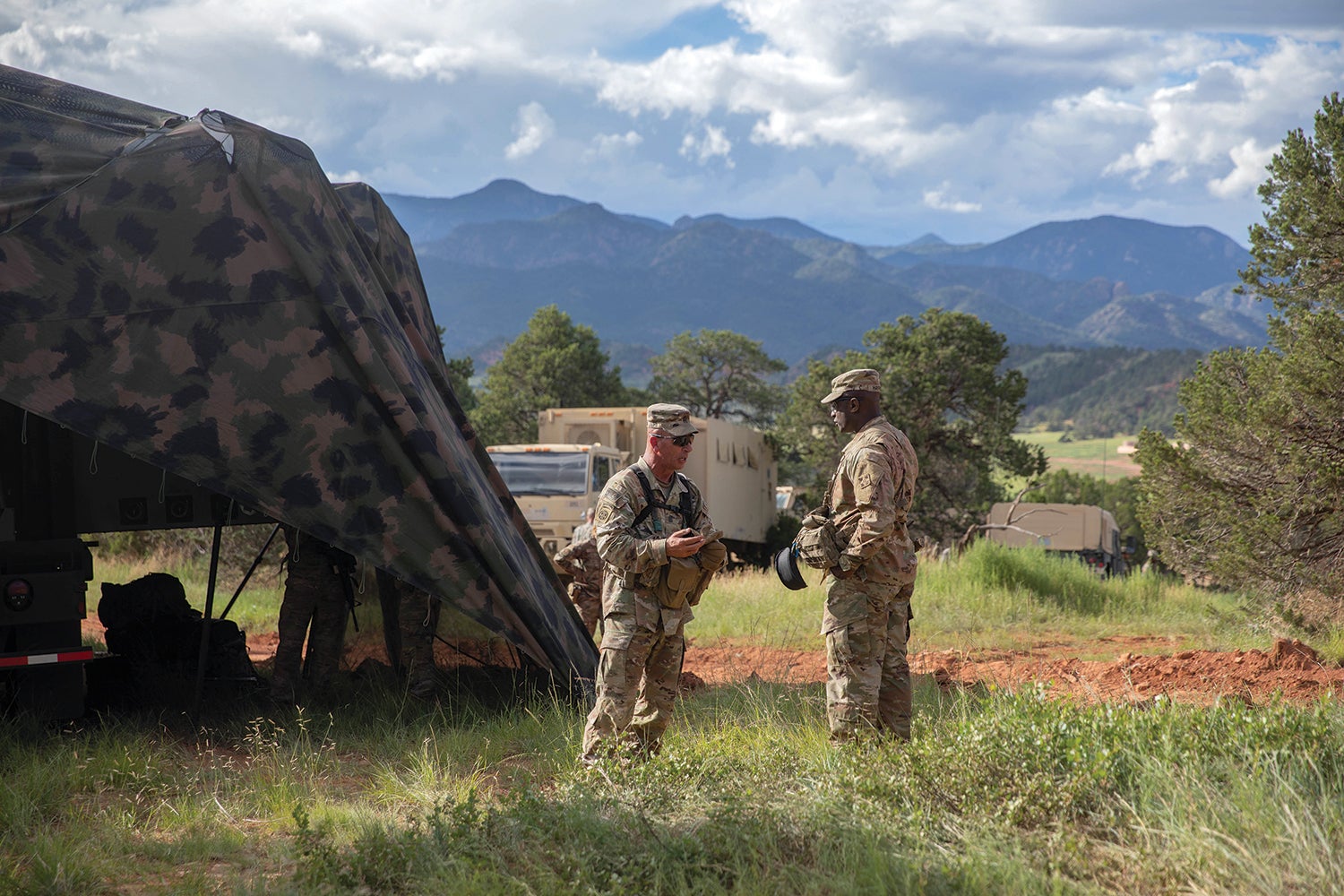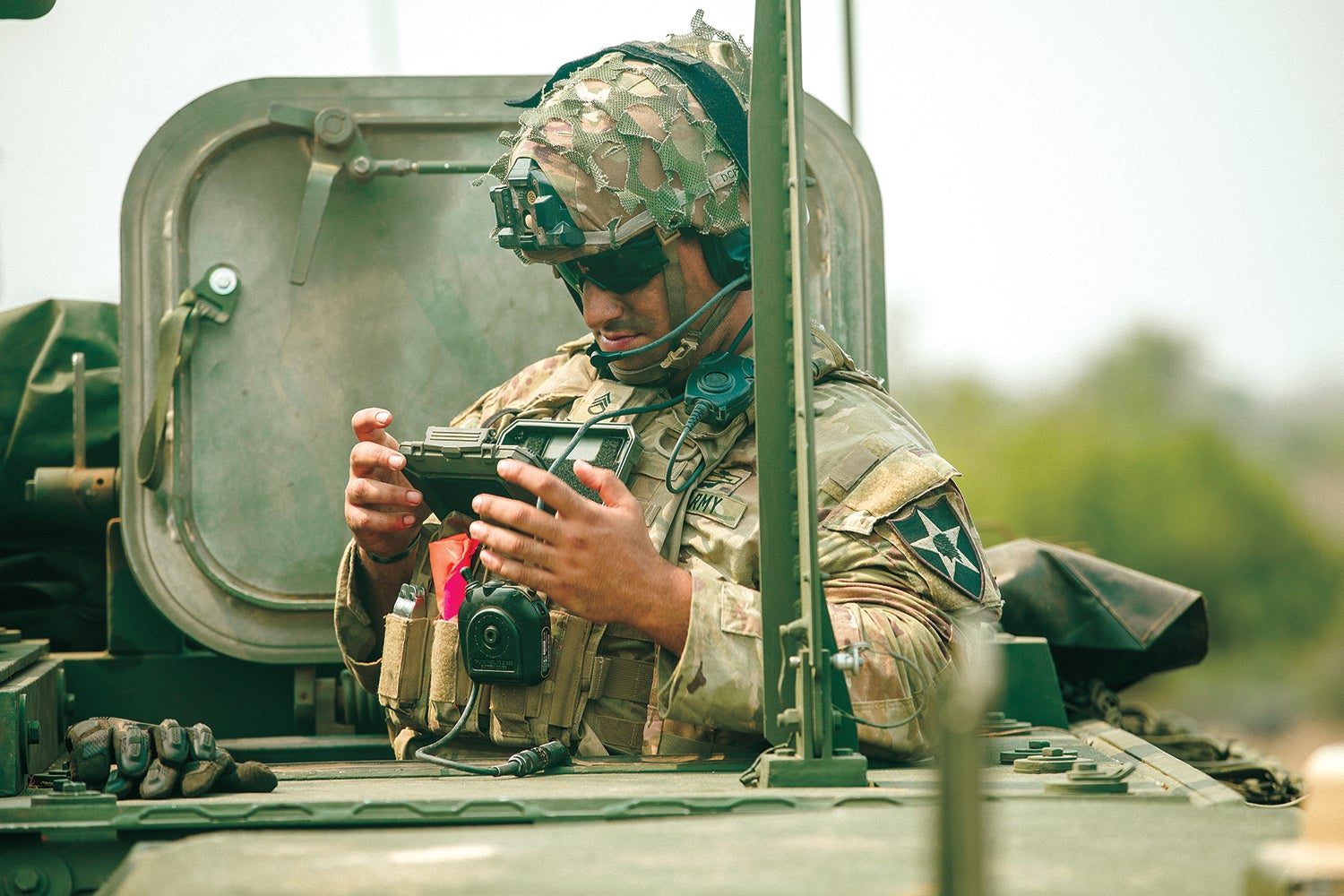The proliferation of drones, long-range artillery and precision missiles is forcing the Army to evolve a key component of the battlefield—the command post. The large, concentrated, tent-based command and control systems that sprawled across the landscape in Iraq and Afghanistan are too easily targeted and attacked using new technologies, rendering them vulnerable in the future operating environment.
Today, commanders are dismantling the tent-based command post and disaggregating it into more mobile—and therefore more survivable—nodes. This achieves two goals. First, it makes command posts harder to detect, find and target. Second, it disperses command elements so the enemy cannot eliminate them all with a single devastating strike.
This change is supported by leaders in the field. Lt. Gen. Xavier Brunson, I Corps commanding general, noted during an event in October at Joint Base Lewis-McChord, Washington, that “this nodal concept allows us to be in the contact layer, to be present and distributed in the theater, so that we remain agile, resilient, survivable and scalable.”
The success of an agile and mobile command and control concept in a dispersed environment will rely on a staff’s ability to confer, share data and make decisions. This creates a greater dependence on network connectivity, made more challenging by the Army’s current multiple and ephemeral hub-and-spoke architectures across several networks. Hub-and-spoke architecture is not conducive to a rapid-mobility fight in an island-hopping campaign or across a continental land mass. Being anchored to spools of wire, fiber optics, multiple heavy server stacks and trailer-mounted satellite terminals demands time and personnel, which inhibit mobility of the command and control infrastructure.

Reducing Physical Requirements
Cloud computing and data management can be employed to reduce these physical network requirements and enhance survivability and mobility of distributed command nodes. Hybrid cloud computing, which uses off-premises resources in concert with geographically local computing, allows commanders to balance resiliency in disconnected, intermittent and low-bandwidth environments with the size, weight and power and cooling requirements of on-premises server stacks collocated with the command and control nodes. This hybrid approach can speed emplacement and displacement, decrease power demands and reduce the need for dedicated stacked server platforms.
Cloud computing also allows redistribution of staff positions in the close area, reducing the command post footprint associated with the need for a workstation, planning space and sustainment requirements for personnel and endpoint systems. As defined in Army Doctrine Publication 3-0: Operations, the close area is the portion of a commander’s area of operations where most subordinate maneuver forces conduct close combat. For example, in a division’s area of operations, it is the area assigned to a brigade combat team.
A prudent data management system utilizing a hybrid cloud approach can help compensate for reduced staff in the close area and permit command operations to occur at a global scale. This will enable the Army to deliver a mobile and dispersed command post to the division, the Army’s unit of action through the foreseeable future.
Enacting a dispersed and mobile command post concept will not be a simple matter of adopting new technology. It also will involve changes in how a commander approaches the operations process and integrates novel solutions to improve mobility and survivability in a distributed environment. As always, it is the soldier who will implement the new command post concept and put the Total Army on the path toward mission success.

Global Access
The hybrid cloud approach opens new opportunities for configuration and architecture needed at echelon. Units expected to remain in garrison potentially no longer would need physical server stacks, lessening or eliminating the need to configure and maintain them. Cloud computing architecture is still designed as a hub-and-spoke model, but unlike the current server stack capability, the cloud “hub” is accessible globally. Conceptually, only a singular entity is needed for the echelon. The endpoints, or command post nodes, continue to be the spokes, enabling the nodes to disperse farther than can be achieved using current wired solutions. Cloud computing enables access to required data, even in distributed operations.
Units currently supporting rapidly changing operational mission sets are utilizing and demonstrating how software designed for a cloud implementation is benefiting the commander and their staff. In one case, a division tactical command post dispersed, and before the tents, tables and chairs were set up, the staff was able to start collaboration on assigned common operating tools.
Consistent View
Cloud resources also allow for a constant, consistent view of the operational environment, from home station to the edge of battle. With the advent of civilian technologies such as commercial satellite connections and 5G, there come improvements in connectivity and shortened latency. Additionally, given the diverse nature of these technologies, it is difficult to block or deny all of them simultaneously.
Given that these technologies are becoming more available around the globe, accessing them could enable the military to digitally disperse within the civilian infrastructure. In addition, reducing network infrastructure through cloud implementation results in a smaller physical and electronic signature footprint across the command post.

A segmented hyperscale cloud pilot capability has been demonstrated at the corps and subordinate levels to reduce command post standup time. The design also seamlessly supports multiple geographic locations, providing a global common operating picture. However, hyperscale cloud computing itself is not a stand-alone solution. The Army must be able to run software seamlessly in on- or off-premises environments to maintain local resilience and meet global demand.
The Army is seeing success with application of cloud computing for training across the Army. At echelon, staffs can train on the same common operating picture system, pulling the system from the cloud, instead of struggling across disparate server hardware. The goal for cloud computing is to reduce the risk associated with a loss of services and continuity of operations. It ensures that when a unit is reestablished on the network, it has immediate access to data to continue operations.
Datacentric Approach
As operational commanders stress the importance of data access at the point of need and sharing data with joint service partners and allies, a datacentric environment is a top priority for Army senior leaders. In a February 2022 message to the force, Secretary of the Army Christine Wormuth outlined six objectives to guide the way forward. Her second objective is to ensure that the Army becomes “more data-centric and can conduct operations in contested environments, which will enable our ability to prevail on the future battlefield.”
Datacentricity and data management also enable the Army of 2030 to exercise global, distributed command and control. A benefit is the opportunity to reduce the physical staff footprint in the close-area fight by reallocating noncritical staff capacities and redistributing them across command and control systems.
Convergence is essential in the distributed command and control environment. This concept involves the convergence of talent, tools and data in the right place and at the right time to improve the commander’s decision-making abilities.

For example, data warfare teams, while not necessarily needed in a forward command and control node, are needed to meet a commander’s decision-making information requirements. They converge what information is needed, determine how it can best be visualized and deliver the data at the right place and time so it can be used to direct resources, apply effects or provide direction and leadership to the organization.
A datacentric approach also can improve protection of the command post. The traditional 24-hour predictive battle rhythm is a risk to the survivability of distributed command and control nodes. Enemies can detect elevated emissions spikes, which alert them to possible action and can help them pinpoint and target the location of a command and control node.
In the future, managing data through a dashboard to simplify and standardize operations could enable a command node to manage its operational emissions so they blend in with civilian infrastructure. This could lower detection and improve survivability of the command and control node.
Survivable Nodes
The Army cannot return to the command and control processes of the past 20 years. Cloud computing reduces the need for cumbersome large server stacks that are difficult to sustain and protect. Cloud computing also could allow staff processes to integrate artificial intelligence algorithms and machine learning to conduct predictive analysis of imagery, detect patterns in enemy sensing and enable predictive sustainment. Reducing the human in the loop minimizes the physical staff presence needed in the close-area fight, which ultimately leads to more survivable command and control nodes, reduced sustainment needs and lower nodal emissions in the enemy contact layer.
Distributed command and control for the Army of 2040 should not be restricted to specific areas of operations but should be viewed as connected and synchronized nodes from home station to the edge of the battlefield. The capacity to achieve global reach is imperative toward the convergence of data at the commander’s—or decision-maker’s—point of need. This can occur from the mobile command platform, nontactical vehicles, fixed civilian infrastructure and even aboard joint, interagency vessels. The air and space domains also must be considered viable mediums for effecting global command and control processes.
Regardless of the platform, venue or location, the operations process is successful when a staff has the right talent, the right tools and data access to provide a commander with actionable information.
As the Army prepares for the future operating environment, current threats and opportunities make command post transformation critically important. Adapting the Army’s technologies and processes to mobile, agile nodes will untie commanders and their staffs from static systems and enhance their ability to fight and win wherever the future demands.
* * *
Maj. (P) Chris Pegg, Illinois Army National Guard, is the command post/distributed command and control lead for the Network Cross-Functional Team, Aberdeen Proving Ground, Maryland, serving in a full-time capacity for the Army National Guard. Previously, he was the executive officer for the Mission Training Complex at Fort Leavenworth, Kansas.
Lt. Col. Philip Smith is the Network Cross-Functional Team’s data system development officer. Previously, he served as the division automation management officer for the 10th Mountain Division. He also served as the chief network engineer at the Defense Intelligence Agency and the Directorate for Intelligence, Joint Staff.

